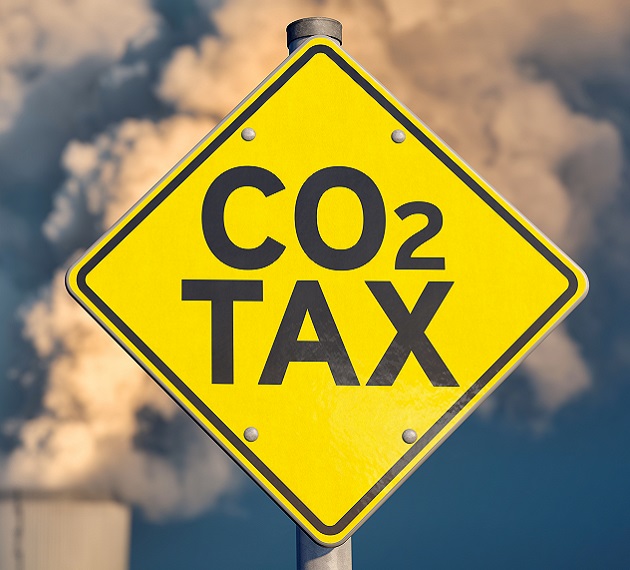Heavy industry may pass the costs of CBAM to EU firms that use the carbon-intensive inputs. The commission estimates this impact to be modest, with a slight dip in employment. Not everyone agrees. Farmers and unions are furious. Pekka Pesonen, head of Copa Cogeca, a farmers’ lobby, says that fertilisers account for about 35% of the cost of crops such as wheat. The CBAM would thus make it harder to compete with cheaper foreign grain. And the costs will be hard to pass on, because consumers are reluctant to pay more for low-carbon products, says Mr Pesonen.
重工业可能会将CBAM的成本转嫁给使用碳密集型原料的欧盟公司。欧盟委员会估计,这种影响是温和的,就业率略有下降。并不是每个人都同意这一点。农民和工会对此非常愤怒。农民游说团体Copa Cogeca的负责人佩卡·佩索宁说,化肥占小麦等作物成本的35%左右。因此,CBAM将使其更难与更便宜的外国谷物竞争。而且成本将很难转嫁,因为消费者不愿意为低碳产品支付更高的价格,佩索宁先生如是说。
Firms’ reaction has been mixed. Many profess to support the energy transition but gripe about the rules. Others, including LafargeHolcim, a Swiss cement giant, say they welcome them. Still, Cedric de Meeus of LafargeHolcim notes that although cement-makers do not now pay for all their pollution, the rising price of carbon in Europe makes EU-made cement pricier than foreign stuff. As a result, the bloc imported 25% more cement in 2020 than in 2019.
企业的反应各不相同。许多企业声称支持能源转型,但对规则怨声载道。包括瑞士水泥巨头拉法基豪瑞在内的其他企业表示接受。尽管如此,拉法基豪瑞的塞德里克·德米乌斯指出,尽管水泥制造商现在不用为他们造成的所有污染买单,但欧洲不断上涨的碳价格使得欧盟制造的水泥比外国的水泥价格更高。因此,欧盟2020年的水泥进口量比2019年增加了25%。

Some trade groups are responding by lobbying lawmakers. With some success: in March the European Parliament passed a non-binding vote to keep the free allowances. Others will hedge by buying extra allowances when carbon prices are low, as power companies now do routinely.
一些贸易组织的反应是游说立法者。并取得了一些成功:3月份,欧洲议会通过了一项不具约束力的投票,决定保留免费补贴。其他公司则会在碳价格较低时购买额外配额来避免损失,就像电力公司现在经常做的那样。
A few are reacting as the plan intended: by trying to decarbonise. In May Thyssenkrupp of Germany teamed up with the Port of Rotterdam to import renewable hydrogen to make green steel. Antoine Vagneur-Jones of BloombergNEF, a research firm, identifies 24 small-scale hydrogen projects in the CBAMed sectors.
一些企业正按照计划所要求的做出反应:试图脱碳。今年5月,德国蒂森克虏伯公司与鹿特丹港合作,进口可再生氢来制造绿色钢材。研究公司BloombergNEF的Antoine Vagneur-Jones确认,在CBAM覆盖领域有24个小规模的氢项目。
Decarbonisation is costly. Mr de Meeus says that making cement with a third less carbon adds some 15% to the cost. ArcelorMittal, the world’s biggest steelmaker and one of Europe’s largest emitters, expects to invest an extra $10bn to cut carbon by 2030. That could raise its capital spending by a third. But the firm also expects governments to cough up a similar amount. Its boss, Aditya Mittal, noted recently that renewable-energy firms enjoyed support from politicians. Other executives call for infrastructure, such as pipelines to funnel captured carbon dioxide from factories, as well as financial aid. The EU may need more carrots to go with its new stick.
脱碳是昂贵的。德米乌斯先生说,生产碳含量少三分之一的水泥会增加约15%的成本。安赛乐米塔尔是全球最大的钢铁制造商和欧洲最大的碳排放者之一,该公司预计将额外投资100亿美元用以在2030年前减少碳排放。这可能将使其资本支出增加三分之一。但该公司也期望各国政府能够支付类似的金额。该公司老板阿迪亚·米塔尔最近提到,可再生能源公司得到了政客们的支持。其他高管则呼吁建立基础设施,比如从工厂收集二氧化碳的管道,并提供财政援助。欧盟可能需要更多的胡萝卜来配合它的新大棒(译者注:胡萝卜加大棒是一句俚语,意为软硬兼施)。
译文由可可原创,仅供学习交流使用,未经许可请勿转载。












